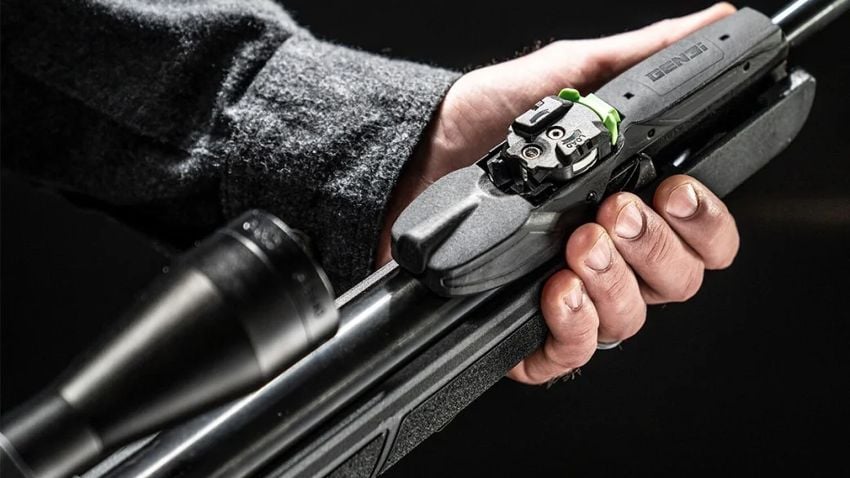What are the differences between gas piston air rifles and spring-powered air rifles?
At the heart of every air rifle lies the mechanism responsible for generating the force needed to propel the projectile through the barrel.
Don’t be mistaken in thinking that all mechanisms are the same! In fact, nowadays, we find two main systems: the traditional mechanism, which uses a spring, and the gas piston technology. But what are the differences between these systems?
If you would like to delve deeper into this matter, you’ve come to the right place! In this article, we will analyze the main differences between the spring system and the gas piston system to help you make an informed decision.
What is a spring system and how does it work?
A spring motor is the traditional mechanism found in many air rifles. It relies on a high-power spring located in the rifle’s compression chamber. When you cock the rifle by sliding the barrel, you are compressing this spring, generating pressure. Once you pull the trigger, the spring is released, which drives a piston forward. This piston compresses the air in the chamber, expelling the projectile out of the barrel at high speed.
What is the gas piston system and how does it work?
“Inert Gas Technology” (IGT) is a proprietary term used by the manufacturer Gamo for its pneumatic cylinder system. These cylinders are a more modern alternative to traditional springs. Instead of relying on a coiled metal spring, they use a sealed cylinder filled with pressurized inert gas.
 Air Rifle Gamo Hunter 1250 Grizzly Pro IGT
Air Rifle Gamo Hunter 1250 Grizzly Pro IGT
When you cock an IGT air rifle, the gas inside the cylinder is compressed. Pulling the trigger releases the gas, which pushes the piston forward, compressing the air and propelling the projectile.
Gamo is not the only manufacturer that uses gas piston technology. Norica refers to it as GRS (“Gas Ram System”), and Cometa uses the abbreviation “GP” (“Gas Power”).
Pros and cons of each system
While it’s easy to fall into the temptation of assuming that “if a system is new, it must surely be better,” it’s important to carefully consider the differences between these two systems to evaluate the pros and cons of each. Let’s take a closer look.
Spring System
Pros:
- Often more affordable.
- Widely available.
- Easier to tune and modify.
- Less effort required to cock.
Cons:
- Can be noisier and produce more recoil.
- Accuracy may be affected if the rifle is left cocked for extended periods.
- Require more lubrication, especially in lower temperatures.
- Cannot remain cocked for long periods.
- Have more components and are heavier.
Gas Piston System
Pros:
- Smoother shooting experience with less recoil.
- Potential for higher shot power.
- Typically quieter than spring rifles.
- Less hold sensitivity.
- Can remain cocked indefinitely.
- Less affected by cold weather.
- Generally lighter and more compact.
Cons:
- Generally more expensive.
- Can be more difficult (and costly) to repair or modify.
- Gas piston system can be quite sensitive, which can make tuning for accuracy more challenging.
Which system comes out on top?
Both spring-powered and IGT air rifles have their merits. While on paper it may seem easy to conclude that the gas piston system brings more advantages, it all depends on your shooting profile, budget, and personal preferences.
If you have a limited budget, appreciate a more traditional system, and enjoy tuning and modifying air rifles, a spring-powered rifle might be a good choice for you. However, if you prioritize a more powerful and quieter shooting experience, along with consistent performance in various conditions, an IGT rifle could be a better investment.
There’s nothing like experiencing each system firsthand and carefully evaluating these nuances to understand which option best suits your needs. If you have any doubts, our specialized team is always available to provide advice via email at [email protected].
Regardless of the system you choose, you’ll find the best selection of spring-powered and IGT air rifles at Mundilar’s online store.

